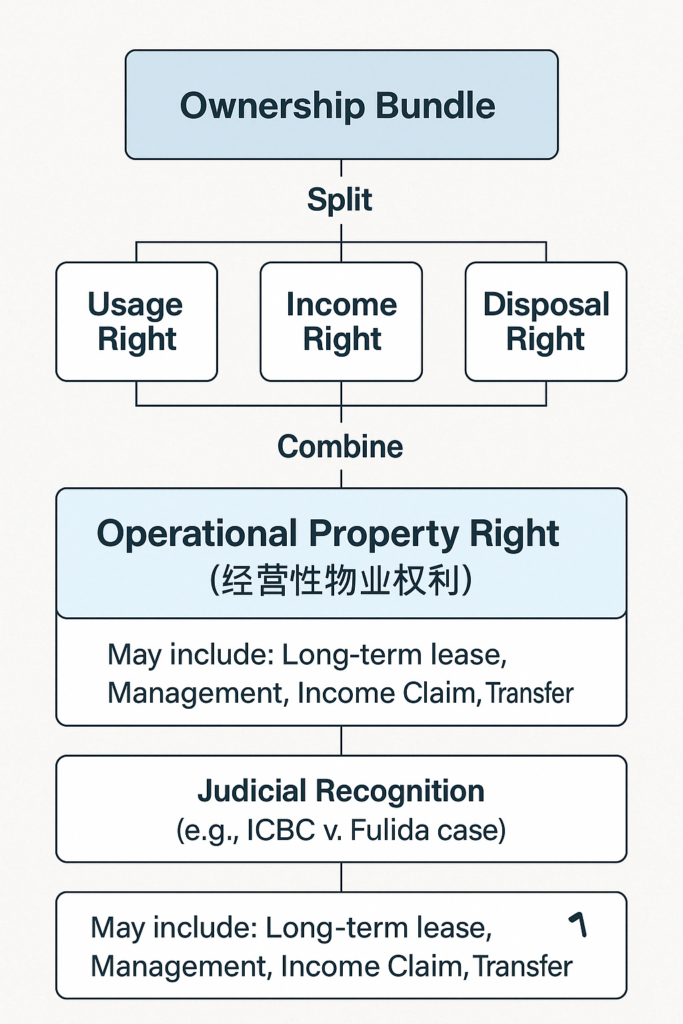This comparative study examines the fundamental differences between Chinese and American fixed asset financing systems, offering critical insights for institutional investors and corporate treasurers. Key findings reveal:
- Policy-driven vs market-oriented approaches shape lending structures
- Divergent risk management philosophies with 72% of Chinese loans held to maturity vs 68% U.S. loan securitization
- Emerging opportunities in China’s green finance (projected 35% market share by 2025) and U.S. private credit ($234B fundraising in 2023)
1. Definition and Classification Frameworks
1.1 China: Policy-Guided Lending Architecture
China’s fixed asset loans operate under strict regulatory frameworks with three distinctive features:
a) Strategic industry prioritization
- 42% of ICBC’s 2023 loan portfolio targeted infrastructure, with 70% allocated to “new infrastructure” (5G, AI, EV charging stations)
- “Two highs and one surplus” industries face lending restrictions to control overcapacity
b) Tiered maturity management
- 30-year terms for national rail projects vs 3-5 year caps on property development loans
- Reflects “housing for living, not speculation” policy and manufacturing upgrade goals
c) Capital co-movement requirements
- 2024 ESG compliance mandates now require environmental impact assessments for all projects exceeding ¥500M
1.2 U.S.: Securitization-Driven Market
American financing demonstrates capital market sophistication:
a) Mortgage-backed securities dominance
- $12T MBS market (68% of total fixed asset loans) through GSEs like Fannie Mae
- Average 2.3-month holding period before securitization reduces bank balance sheet risks
b) Private credit solutions
- 35% of CRE loans originate from non-bank lenders (Blackstone, KKR) offering mezzanine financing
- LIBOR transition completed in 2023, with SOFR now standard for floating-rate loans
2. Regulatory Landscapes Compared
| Dimension | China | United States |
|---|---|---|
| Capital Rules | 30% minimum down payment (20% for strategic industries) | Risk-based pricing with 300bps stress testing per SR15-19 guidance |
| Risk Transfer | PBOC relending facilities provide liquidity backstop | 5% risk retention requirement for MBS issuers (Dodd-Frank Section 941) |
| Collateral | 90% loans require real estate collateral | Covenant-lite structures common in institutional lending |
Data Source: PBOC Statistical Report 2024, Federal Reserve SR15-19
3. Market Dynamics and Risk Management
3.1 Interest Rate Formation
- China: LPR-based pricing with 85bps spread for manufacturing vs 45bps discount for infrastructure
- U.S.: 10Y Treasury + credit spread model, averaging 285bps over Fed funds rate
3.2 Default Resolution Mechanisms
China’s approach:
- Government-mediated debt restructuring (e.g., 2024 Shimao Group $10B workout)
- Interest rate caps protect borrowers during monetary tightening
U.S. practices:
- CDS markets provide $8.7T notional protection against defaults
- 73% of CRE loans employ interest rate swaps for hedging
4. Case Studies: Lessons from the Field
4.1 China Success Story: Gemdale’s Liability Management
The Shenzhen-based developer achieved:
- 17% reduction in short-term debt through ¥15B green bond issuance
- 45-day accounts receivable turnover via supply chain fintech solutions
4.2 U.S. Cautionary Tale: Silicon Valley Bank Collapse
Key takeaways from 2023 crisis:
- Duration mismatch: 10.2-year asset duration vs 0.8-year liabilities
- Hedging failure: Unhedged $25B MBS portfolio amplified losses
5. Future Outlook and Strategic Recommendations
5.1 China’s Evolving Market
- Digital transformation: CCB’s IoT-based collateral monitoring reduces NPLs by 22%
- Carbon finance: PBOC’s 50bps discount on green loans accelerating adoption
5.2 U.S. Market Adaptations
- Floating-rate shift: Projected 40% share in CRE loans by 2025
- Private credit innovation: Customized solutions for middle-market borrowers
Conclusion: Navigating Divergent Systems
For institutional investors:
✅ China opportunities: Target new infrastructure projects with local government guarantees
✅ U.S. strategies: Utilize interest rate collars when financing CRE assets
Corporate treasurers should:
• Develop dual-currency hedging capabilities
• Build asset-light balance sheets through sale-leaseback structures
About Sinoloanhub: We provide cross-border financing advisory services, specializing in China-US commercial real estate and infrastructure project finance. Contact our team for customized capital solutions.
🥳 Love My Content?
Fuel more free guides with a beer! 🍺
(Every sip makes the keyboard dance!)
Secured via PayPal • No account needed

 SinoLoanHub: Expert Business Loan Solutions for North American Companies
SinoLoanHub: Expert Business Loan Solutions for North American Companies






